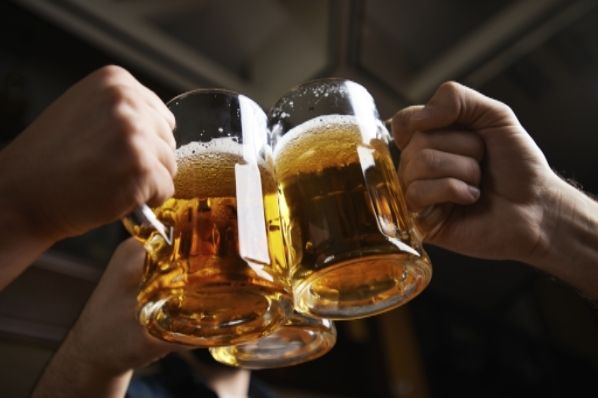The Countdown has begun in Germany: Less than a month until the first barrel of beer is tapped in Munich and Oktoberfest begins. Already, beer tents are popping up like pumpkins on Munich’s famous Theresienwiese and all across the country. Men will dig out their lederhosen; women their traditional dirndls, and they’ll all grab their steins to be filled with a liter—yes, a full liter as a single serving—of beer.
When Americans hear about Oktoberfest, the image of an out-of-control frat party likely comes to mind. Too many people drinking way too much alcohol resulting in all sorts of bad outcomes.
Yet the actual experience of a beer tent at Oktoberfest is quite different. Sure, you can find some way-too drunk people, especially in Munich—though the Germans will point out these are mostly college-age Australians or Americans. But get away from the beer tourists and mostly you’ll see men and women of all ages singing, dancing, and sharing drinks. People old enough to be great-grandparents will be seated next to children, who will also be taking part in the dancing as well as the county fair-style games that often pop up among the beer tents.
For an occasion that famously revolves around alcohol, there’s an amazingly wholesome feeling to it. People seem genuinely joyful and unashamed that the alcohol adds to the merriment.
America could use a little of the Oktoberfest attitude. Needless to say, regularly drinking liters of beer in a single sitting likely isn’t a healthy habit. Yet the alarmism in the United States around alcohol use—almost any alcohol use—is both unnecessary and likely counterproductive in terms of creating better health outcomes and a healthier relationship with alcohol.
Consider this study, which made headlines last year with the finding that both “heavy drinking” and “binge drinking” have been on the rise. The study’s author intoned: “We are seeing some very alarming trends in alcohol overconsumption, especially among women…We also can’t ignore the fact that in many US counties a quarter of the people, or more, are binge drinkers.”
Indeed, it would be concerning if nearly one out of every four Americans were truly “binge” drinkers—a term one associates with falling-down drunks. Yet for the study, “binge drinking” is defined as consuming four alcoholic drinks for a woman, or five for a man, on any occasion over the last month. That’s a lot to drink, to be sure, but given that there is no mention of how many hours that occasion might entail or the strength of the drinks, one long afternoon spent at Oktoberfest—or one night drinking light beer during a Super Bowl party or an extended evening of dinner and dancing—would make “binge drinkers” out of many perfectly healthy people.
The study also concluded that, as of 2012, 8.2 percent of Americans were “heavy drinkers.” To earn that ignominious label a woman had to drink an average of one drink a day over a month. That categorization might make sense for someone in the alcohol industry: Someone having a glass of wine with dinner each night is a promising customer since that means they might buy 6 or 7 bottles of wine a month. But does this mean this woman also has a health problem that society needs to worry about?
Not necessarily. Studies suggest a glass of wine a day may be associated with better health outcomes on some measures, though not on all. Certainly most women drinking a single glass of wine per day aren’t problem drinkers, a classification that ought to be reserved for those suffering from a true dependency on alcohol that impacts their judgment, health, and life outcomes. Thankfully, that condition, while too prevalent, effects a far smaller share of Americans.
Hyping the extent of problem drinking does more than just feed media hungry for eye-catching headlines. It contributes to a culture that demonizes alcohol in a way that isn’t in our best interests. Conflating healthy, regular drinking with problem, heavy drinking misses where society’s concern ought to be: helping those with true dependency problems.
The taboo around alcohol may also contribute to the alcohol abuse that occurs too often among young people, ironically in countries such as America with the most stringent laws preventing youth any access to alcohol. Perhaps we’d be better off if—rather than sending the message that it’s dangerous and a moral failing to have even one glass of wine—adults felt more free to openly enjoy a stein of beer in front of children and even teenagers, modeling how drinking can be enjoyable, without being out of control.
After all, although it seems politically incorrect to say so, drinking reasonably can be fun and encourage positive fellowship. It’s a part of America’s cultural heritage—the Founding Fathers were beer aficionados—and has the moral bona fides of having been part of Jesus’s first miracle (turning water into wine). Americans ought to say enough with the alarmism and cheers to a healthier drinking culture.


